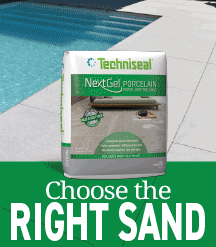Articles written by guest contributors

This backyard is lit with PaverDot™ path lights from Hardscape Depot along with Empress garden lights, tree and ground spotlights by Dekor® Lighting.
LED takes outdoor lights to new heights
By Duane McCall, Perfection Lighting ConsultantsHomeowners invest a lot of money to create a personal outdoor environment as an escape from the rest of the world. A retreat; a secret garden; a place to relax, read a book or have a glass of wine. When the sun goes down they need customizable “mood” lighting that matches the serenity of their outdoor living spaces.
Human-Centric Lighting (HCL) is the relationship between light and levels of wellbeing. Human-Centric Lighting is emotionally effective lighting that creates stimulating environments. "Human-centric lighting is about being able to personalize and control your lighting to suit your needs and increase your wellbeing," said Luc Schlangen, Senior Principal Scientist, Philips Research.
The control afforded by Light Emitting Diode (LED) lighting allows you to take HCL to the outside. LED has created a new and expanding range of outdoor lighting options to help you create an outdoor wonderland of illumination. From a subtle glow over a garden box, to the look of moonlight through the trees, LED lights can provide not only a mood, but provide safety and security to your client’s outdoor life-scape.
LEDs produce colors
The latest trend in LED lighting is the ability to control the color of the light. Other light types, such as incandescent and halogen have 1 color. They require that you change the color of the lens to change the color of the light.LEDs can actually produce the color. Some systems allow your client to change both the color and intensity produced by LED lights with a simple remote control that electronically mixes varying amounts of primary colors. Literally any color in the visible spectrum can be produced.
Today, the remote control can take the form of apps for smart phones. There are now apps to control many different types of outdoor and indoor lighting systems.

PaverDot™ Lights are embedded in a natural stone garden path with an LED garden light in the greenery.
Huge electricity savings
Additionally, LED lights are great for the outdoors because they can be manufactured to be waterproof, take very little electricity to drive them, and they last for years. The low power consumption reduces the cost of running an outdoor system significantly.Here’s an example of what using LED lights rather than incandescent lights can save. The cost of using 45 incandescent bulbs for 10 hours a day is $986.18 annually. Powering halogen lights costs even more. The cost to run the equivalent in LED lamps, would be $118.34. That’s a savings of $867.84 per year.
Easy installation
LEDs can be easily strung together in a series or split in different directions from a hub. The low line voltage allows the connectors and hubs to be much smaller than those needed for traditional 12v systems. Being smaller makes them easier to hide out of sight.Once the transformer is placed, you simply run low wattage outdoor cable and connect the units. Some suppliers offer plug-and-play type connectors that eliminate the need to splice wires or use wire nuts.
LED lights use such low voltage that they typically can be run further out than an incandescent or halogen system, and they can have more lights attached to that run.
Safe
The low power draw of a 12v DC LED system makes them much safer than 12v AC systems. And with plug-and-play type connectors there is less chance of getting shocked when wiring an LED light system.
These LED wall lights use No See Em Light strips under the capstone.
Qualities to look for in an LED
One of the most important things to remember when looking into LED lighting is the quality of the actual LED, the engine so to say. The L-Value and the Color Rendering Index (CRI) are 2 important ratings to look for.The L-Value reflects the loss of brightness over 5 years of an individual LED. The average L-Value is 70% which means the LED will lose 30% of its brightness over 5 years. Look for LED lights that have a high L-Value like those from CREE which have a 90%-plus L-value.
The Color Rendering Index (CRI) has to do with duplicating actual color correctly. In other words, is the red apple actually red? The color of the light affects how we see things. Using the color of the sun as a 100% value, an LED that has a high percentage CRI will have a light color that is closer to that of daylight (3,200 K).
LED lights from CREE have a 90%-plus Color Rendering Index. Many lower quality LEDs have plastic backings and an inferior phosphor on their LEDs. High quality LEDs use ceramic backing and high quality phosphor. This adds to the quality and longevity of the LED.
LEDs give your clients greater control over their outdoor lighting atmosphere at a fraction of the cost to run incandescent or halogen lights. Help your clients understand that LED outdoor lighting can improve their mood or wellbeing by creating a sense of serenity, security and wonder by lighting up their lives.
For more information visit www.DekorLighting.com or www.HardscapeDepot.com
With over 12 years in the LED lighting industry, Duane McCall has has a Bachelor’s degree in Mechanical Engineering, worked for NASA and several aerospace contractors, then started Dekor® Lighting, designing and manufacturing LED products. He holds several patents in LED technology. Duane believes in his company’s mission statement: Innovate, build the best, and leave the rest to God.















